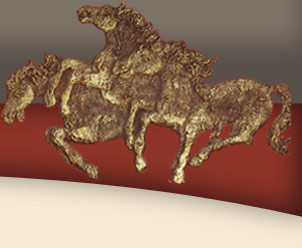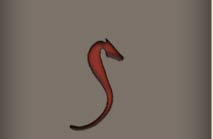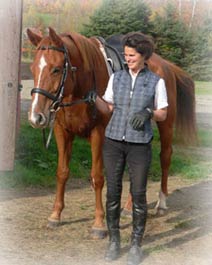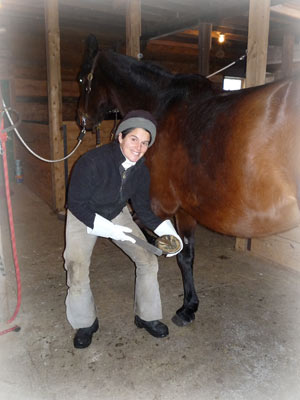





Barefoot trim
Jane began experimenting with various barefoot trims because every horse seemed to be tense or lame and because she was unable to find satisfactory answers from other trainers, vets or farriers. The hooves, as the foundation for posture and movement as well as an indicator of overall health inspired her exploration of biomechanics (how the structures are designed to function) and biochemistry (the effects of feed and stress on the foot). She realized that here too, tradition has allowed the masking of symptoms (covering unhealthy feet with a shoe rather than looking for ways of restoring foot health) to become acceptable practice.
A veterinarian’s training teaches him/her to isolate pathology in a limb and treat the symptom that it is. A farrier’s training teaches him to compensate for feet that are severely compromised by the way we oblige horses to live. But by the time they are seeing pathology in an x-ray or a foot the horse has already developed many compensatory deviations from ‘healthy’ in the rest of his body (that un-diagnosable lameness).
Jane started noticing how an unshod foot adapted and attempted to provide the horse with what it needed and she wondered if we (horse professionals) were approaching the issue from the wrong side. Instead of enabling a return to health from the inside out we impose correct mechanics and ‘protection’ from the outside with the use of shoes, pads, injections, supplements etc. on the parts of the body manifesting the imbalance in a way that obliges them to be perpetually dependent on our increasingly complicated intervention. It also allows us to continue to breed animals with serious biomechanical flaws as well as poor hoof quality.


